
Recommendation on a Weight Distribution System for a 28 Foot Airstream Trailer and 2017 Ford F-250
Question:
Hi Folks, Just got a 2017 Ford F250 4X4 truck, which is rather high off the ground and has a 2½inch receiver. I have a 2018 Airstream 28foot Flying Cloud trailer on order. GVWR is 7600 lbs., hitch weight with propane and batteries is 899 lbs,, according to Airstream. Not having the trailer yet I cant actually measure it. I want to get a weight distributing hitch with sway control. The Airstream dealer recommends the Equilizer, but I dont think I can live with the creaking noises they are reputed to produce. I think Id like the Blue Ox or the Reese Steadi-Flex, but neither seems to have a 2½inch stinger as an option. As picky about noise as I am I dont think I want to listen to all the noises produced by a 2inch stinger moving in the Ford hitch adapter that came with the truck which in turn will move in the hitch receiver..... Just too much slop. Any recommendations? Thanks! PS - Attached is a photo totally unrelated to the above. I purchased some tire chains from you late last year: Konig XG-12 chains for the Volvo and SCC Z-chain cables for the Aliner camper. Used them to get through a snow storm on I-5 near Mt. Shasta on the California/Oregon border this past January. It was an adventure. Only us and tractor trailers on the road that night.... Enjoy!
asked by: Erik V
Helpful Expert Reply:
When trying to decide on a proper weight distribution (WD) system for your towing rig, you will need to know the total tongue weight (TTW) of your set-up. The total tongue weight will be a fully loaded ready to tow trailer, plus any weight located behind the rear axle of your tow vehicle. You want to use a system where your total tongue weight will fall in between the WD system's tongue weight range. I have attached an article that will explain how to find the TTW of your towing rig.
Once you have found your total tongue weight, you will be able to decided on the correct system for your towing application.
Now with the information that you provided on your Airstream trailer, I will be able to give you a general recommendation on a WD system. Typically, tongue will be 10 to 15 percent of the total weight of the trailer. So if your GVWR of your Airstream is 7,600 lbs, then you will be looking at a tongue weight between 760 to 1,140 lbs.
I recommend the Reese Strait-Line Weight Distribution System w/ Sway Control, # RP66074. This system will work well within the 760-1,140 tongue weight range. Also, this system has a dual cam sway control that that is automatically self-adjusting, self-centering. This the cam and chain systems are a quieter than friction bar systems like the Equal-I-Zer WD systems.
If your TTW turns out to fall within the 600 to 1,200 lbs range then the Reese Strait-Line will work well for your application.
This WD system does not include a shank or trailer hitch ball. For a shank I recommend the Curt Weight Distribution Shank for 2-1/2" Hitches, # C17128, and # A-90 for a 2 inch ball or # C40008 for a 2-5/16 ball.
I have attached a couple videos on the Reese Strait-Line WD system and an article on general information on weight distribution systems for you to review.

Products Referenced in This Question
2" Hitch Ball - 1-1/4" Diameter x 2-5/8" Long Shank - Chrome - 10,000
- Trailer Hitch Ball
- Trailer Hitch Ball
- Standard Ball
- Chrome-Plated Steel
- 2 Inch Diameter Ball
- 2-5/8 Inch Shank Length
- 1-1/4 Inch Diameter Shank
- 10000 lbs GTW
- Class IV
- Class V
- CURT
more information >
2-5/16" Hitch Ball - 1-1/4" Diameter x 2-3/4" Long Shank - Chrome - 20,000 lbs
- Trailer Hitch Ball
- Trailer Hitch Ball
- Standard Ball
- Chrome-Plated Steel
- 2-5/16 Inch Diameter Ball
- 2-3/4 Inch Shank Length
- 1-1/4 Inch Diameter Shank
- 20000 lbs GTW
- Class IV
- Class V
- CURT
more information >
Strait-Line Weight Distribution w/ Sway Control - No Shank - Trunnion Bar - 12K GTW, 1,200 lbs TW
- Weight Distribution Hitch
- WD With Sway Control
- Some Sway
- Shank Not Included
- Electric Brake Compatible
- Fits 2 Inch Hitch
- Fits 2-1/2 Inch Hitch
- Allows Backing Up
- 1000 lbs
- 1100 lbs
- 700 lbs
- 800 lbs
- 900 lbs
- Reese
more information >
Product Page this Question was Asked From
Reese Steadi-Flex Weight Distribution System w/ Sway Control - Trunnion - 12K GTW, 1.2K TW
- Weight Distribution Hitch
- WD With Sway Control
- Some Sway
- Includes Shank
- Electric Brake Compatible
- Surge Brake Compatible
- Fits 2 Inch Hitch
- Allows Backing Up
- 1000 lbs
- 1100 lbs
- 700 lbs
- 800 lbs
- 900 lbs
- Reese
more information >
Featured Help Information
Instructions
Miscellaneous Media

Continue Researching
- Shop: EcoHitch Hidden Front Mount Trailer Hitch Receiver - Custom Fit - 2"
- Shop: Rock Tamers Heavy-Duty, Adjustable Mud Flap System for 2" Hitches - Matte Black
- Video: EcoHitch Hidden Front Mount Trailer Hitch Installation - 2021 Ford F-250 Super Duty
- Shop: Mud Flaps
- Shop: Front Mount Hitch
- Article: 5 Things to Know About Weight Distribution Hitches
- Article: Determining Trailer Tongue Weight
- Article: 2 Steps for Finding the Right Weight Distribution Hitch Size
- Q&A: Recommended Weight Distribution System for a 6,800 lbs 2019 Lance 2465 Travel Trailer
- Q&A: Surge Brake Compatible Weight Distribution System Recommendation
- Article: 5 Tips to Confidently Choose Your Weight Distribution Hitch
- Article: How to Measure for Trailer Hitch Drop
- Article: Best Hitches for Travel Trailers (2022) - For a Smooth, Sway-Free Ride
- Article: Most Popular Wheel Bearings
- Q&A: Recommendation for Upgrading From Fastway Weight Distribution Hitch
- Q&A: Maximum Towing Capacity of 2014 Chevy Traverse
- Q&A: Best Towing Mirror Extensions For a 2024 GMC Sierra 1500
- Q&A: Can You Back Up Trailer with Reese Dual Cam II Weight Distribution System Installed
- Q&A: Comparing Blue Ox, Curt, and Fastway Weight Distribution for Starcraft Launch Hybrid





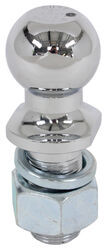


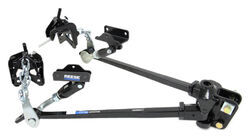

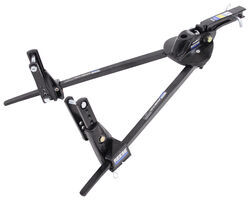
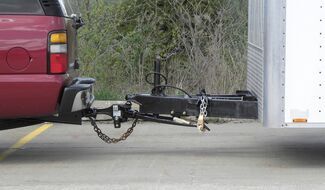
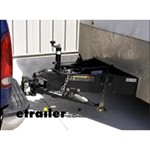
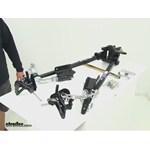
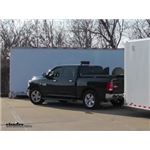
Bill S.
5/6/2020
I have a 2020 Ford F250 Superduty (just upgraded from a 2016 Ford F150. I use a Reese Weight Distibution System RP66074, with a Reese 2" Hitch Bar/shank p/n 54970 to tow my 2018 Airstream Globetrotter. Tongue weight is about 850 lbs. My weight distribution head currently spans the 2nd to the 5th hole. I'm planning to move it to the 3rd and 6th (bottom) hole. Any reason I can't or shouldn't use the bottom hole? Thanks,